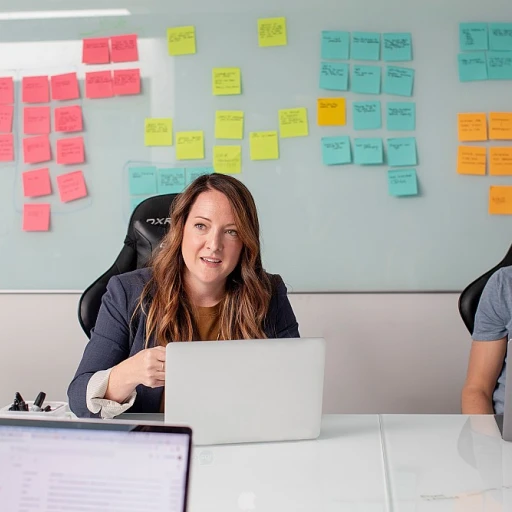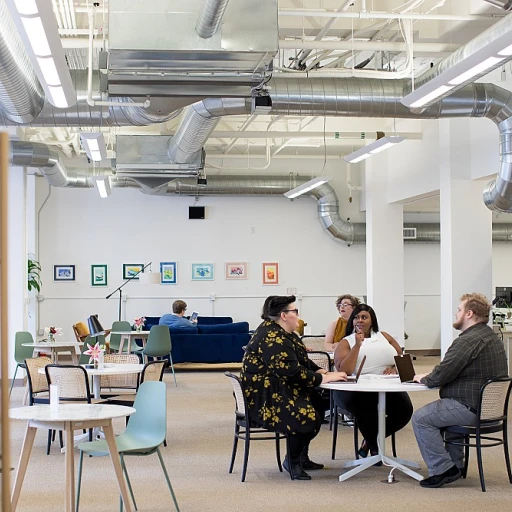
Understanding the Skills Gap
Addressing the Disconnect Between Skills and Job Requirements
In today's rapidly evolving job market, understanding the skills gap is more crucial than ever for achieving workforce development goals. The skills gap refers to the disparity between the skills that employees possess and the skills required by employers for available jobs. This gap can hinder the growth of companies and the broader economy.
As companies across various sectors strive to adapt to technological advancements and changing market demands, they often find that their current workforce lacks the necessary competencies. This disconnect can lead to several challenges, such as reduced employee satisfaction and engagement, a slower pace in career advancement, and even higher turnover rates.
Addressing the skills gap is essential for creating an effective workforce development strategy. By doing so, organizations can foster a culture of continuous learning and development, ultimately contributing to employee satisfaction and operational success. Recognizing the core competencies needed for your company can guide you in developing tailored training programs.
Furthermore, it is crucial for both public and private sectors to collaborate in these endeavors. Public health institutions, for instance, can play a role in nurturing a health workforce that meets the community's needs. Public-private partnerships can also enhance opportunities for skill-based workforce development programs.
Gov initiatives and strategic plans can also have a significant impact. Public partnerships can help workforce development by offering various training opportunities, increasing job readiness among workers, and supporting sustainable employment pathways.
In sum, understanding the skills gap is a preliminary step in any workforce development initiative. Engaging departments across a company in strategic discussions will help align goals, resources, and opportunities, ensuring that the company creates a robust skills development strategy to support both current employees and future community needs.
For more insights into enhancing employee engagement alongside strategic planning in HR management, you may find this article helpful: Enhancing Employee Engagement via Strategic HR Management.
Identifying Core Competencies
Pinpointing Essential Abilities for Workforce Success
In order to tackle the skills gap effectively, it's crucial for organizations to first identify the core competencies required for their workforce to thrive. This involves recognizing the specific skills and knowledge that align with both current and future job roles within the company. To begin, employers should assess the skill sets of their existing employees and compare them with the needs of the company's strategic goals. This can be accomplished through assessments, employee surveys, and performance evaluations, which will help pinpoint areas where skills are lacking. Furthermore, it's essential to differentiate between skills that are universally applicable across industries and those that are industry-specific. This distinction enables companies to prioritize development training programs focusing on skill areas that will foster career advancement and employee satisfaction. Effective workforce development also involves collaboration with various departments, including human resources, to craft a plan that aligns with the company's strategic development strategies. This coordinated approach ensures that training programs not only address the individual development needs of employees but also support the broader company objectives. By clearly identifying the core competencies essential for workforce success, organizations can create targeted opportunities for skills development. This strategic process helps in building a capable and efficient team ready to meet future challenges. In turn, this enhances employee retention and satisfaction, ultimately contributing to public health workforce improvements and overall community growth.Developing Tailored Training Programs
Customized Training Pathways
Creating tailored training programs is a crucial component in addressing the skills gap within a workforce. Every company has unique needs and requirements based on its industry, size, and strategic objectives. Identifying the skills that are essential for the company's growth and success is the first step in developing effective training solutions. Customized training pathways provide employees with opportunities to gain the necessary skills and knowledge that align with both their career advancement goals and the organization's objectives. Such development programs are particularly important in enhancing employee satisfaction and retention.- Assessment of Current Skills: A comprehensive assessment of the existing skills among employees or a department is vital. Employers need to understand the strengths and areas for improvement to create a development plan that addresses these gaps effectively.
- Creating a Strategic Plan: A strategic plan aligns the skills development strategies with the company's objectives. By ensuring that training programs are strategically oriented, companies can provide their public with coherent pathways that align with professional standards.
- Flexible Learning Opportunities: Incorporating flexibility in training programs helps address diverse learning preferences among employees. This will help in engaging the workforce and catering to different learning styles, which can improve the overall effectiveness of training development.
Leveraging Technology in Workforce Development
Harnessing Digital Tools and Platforms
In the ever-evolving landscape of workforce development, leveraging technology can prove to be a game-changer for organizations looking to bridge the skills gap. By integrating digital tools and platforms into the development plan, companies can create more efficient and effective training programs that cater to the needs of their employees and the industry at large.
Technology offers various opportunities for employers to craft workforce development strategies that are both innovative and accessible. Here's how organizations can maximize their potential using technology:
- Online Learning Platforms: These platforms offer accessible training programs that employees can engage with at their own pace, allowing for flexibility and personalization. This adaptability helps cater to different learning styles and schedules, promoting skills growth and employee satisfaction.
- Data-Driven Insights: Utilizing analytics tools allows companies to identify skill gaps within their workforce more accurately. These insights provide an essential basis for tailoring development strategies to address specific areas within the workforce, ultimately enhancing the effectiveness of training development.
- Virtual Reality (VR) and Augmented Reality (AR): Incorporating VR and AR into training programs offers immersive experiences that can simulate real-world scenarios. This approach is particularly beneficial in fields such as public health and technical jobs, where practical, hands-on experience is vital.
- Collaboration Tools: Encouraging collaboration through digital platforms can facilitate communication between departments, enhancing the collective skills and knowledge of the workforce. These tools foster a community-based approach to learning, aligning with strategic plans aimed at creating workforce synergies.
- Remote Training Options: With the rise of remote working, providing remote training opportunities ensures all employees have equal access to development programs. This not only broadens the scope of what can be achieved but also helps in maintaining a health-first approach to workforce management.
Implementing technology-based workforce development strategies supports a dynamic and adaptable workforce, prepared to meet the future demands of their roles. Ultimately, technology not only enhances the development process but also aligns with a strategic plan for sustainable growth and job satisfaction.
Collaborating with Educational Institutions
Strategic Collaborations for Workforce Enhancement
In the pursuit of crafting an effective workforce development strategy, collaborating with educational institutions plays a pivotal role. This collaboration bridges the gap between academia and real-world demands, ensuring that emerging talent is equipped with the relevant skills and knowledge required by employers. Educational institutions can offer tailored training programs that align with the company's strategic plan. By working together, companies can create customized courses that focus on the core competencies necessary for career advancement within specific industries. This strategy not only enhances the skills of new workers but also provides opportunities for existing employees to expand their capabilities. Local colleges and technical schools often have development programs aimed at boosting the public health workforce. Engaging with these programs allows organizations to tap into a valuable resource of educated and trained potential employees. Furthermore, support from government entities often accompanies these initiatives, providing additional resources and incentives for both education providers and companies.- Align Educational Outcomes with Workforce Needs: Ensuring that learning outcomes match job requirements will help workforce preparedness and employee satisfaction. Companies that engage in ongoing dialogue with educational institutions can help ensure that curriculum adjustments reflect changing job market demands.
- Public-Private Partnerships: These partnerships promote a shared vision for future workforce needs. They can result in knowledge transfers, creation of job-based workforce training programs, and improved access to cutting-edge technology that employees can harness in their roles.
- Community Engagement: By involving the community, employers foster a larger ecosystem that supports workforce development. It promotes public health and a robust local economy where educational institutions, companies, and government entities harmonize their efforts.
Measuring Success and Adjusting Strategies
Evaluating Workforce Growth and Adaptability
To maintain a competitive edge and ensure the longevity of your organization's development plan, it is pivotal to implement a robust system for measuring success within your workforce development initiatives. Here are some key strategies to consider:- Regular Performance Reviews: Conduct periodic assessments to gauge the effectiveness of training programs. This can involve analyzing if employees have acquired the necessary skills and competencies that align with the company’s strategic plan.
- Employee Feedback Mechanisms: Solicit feedback from workers about their experiences with development programs. This feedback will help identify areas of improvement in your training development initiatives and contribute to employee satisfaction.
- Utilizing Key Performance Indicators (KPIs): Establish KPIs that are aligned with your workforce development goals. These can range from increased job performance to employee retention rates, providing a quantitative measure of progress.
- Tracking Career Advancement: Monitor the career progression of employees participating in training programs to see if they've been promoted or have taken on additional responsibilities, indicating effective workforce preparation.
- Collaboration with Departments: Work with department heads to develop specialized criteria for measuring success, ensuring alignment with their specific skills needs and workforce objectives.
- Public Health and Community Consideration: Assess how your workforce development programs contribute to broader community and public health goals. This holistic approach fosters a community-based workforce that enhances overall employee satisfaction.












